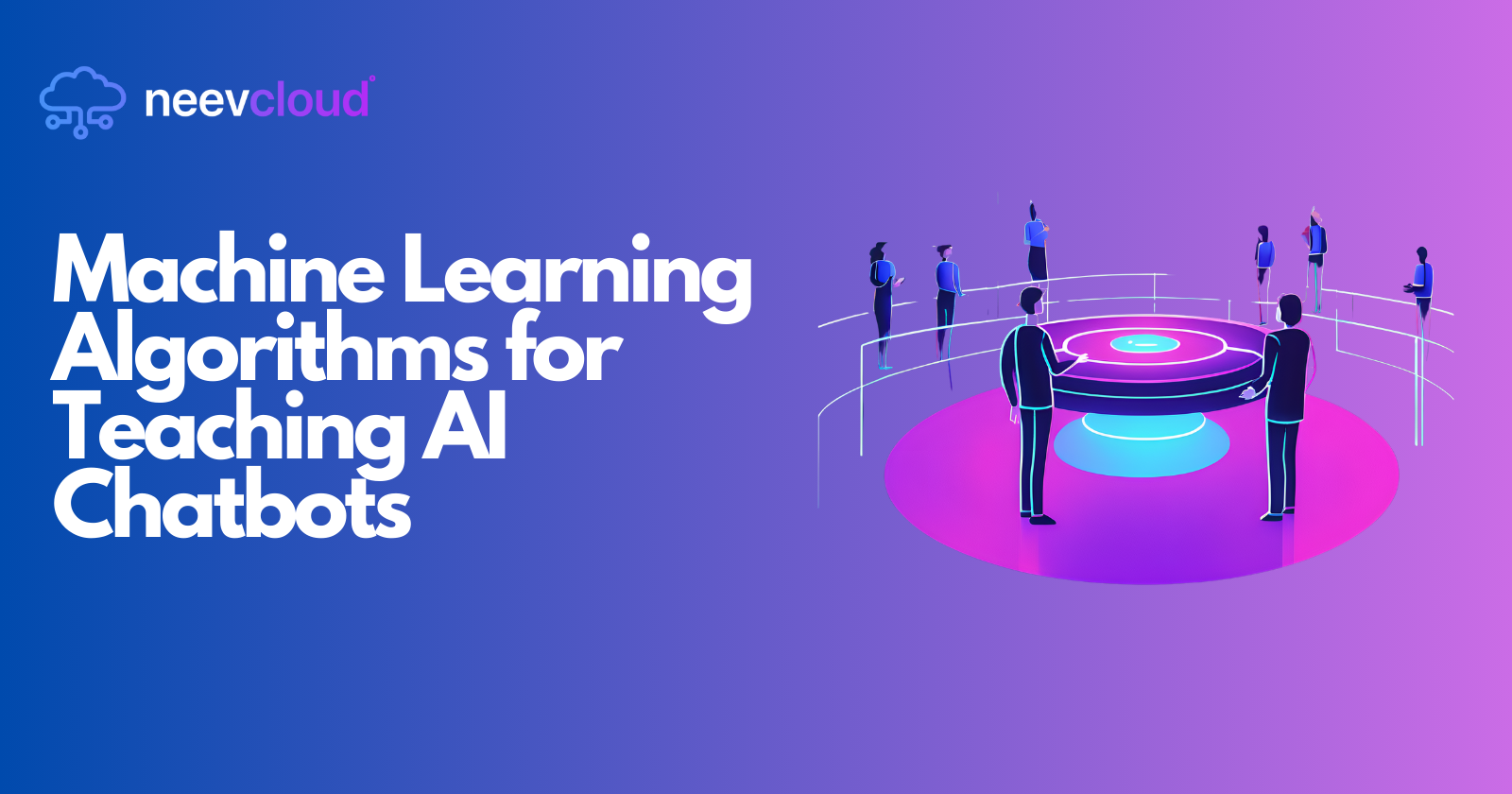Machine Learning Algorithms for Teaching AI Chatbots
 Tanvi Ausare
Tanvi Ausare
As chatbots evolve, they're increasingly becoming the backbone of digital customer service, virtual assistants, and automated support. Teaching AI chatbots to be intelligent, responsive, and context-aware requires robust Machine Learning (ML) algorithms. When deployed on powerful cloud infrastructure like AI Cloud and Cloud GPU, these ML algorithms gain the scalability and speed they need for real-time processing and enhanced AI capabilities. Let’s explore the key ML algorithms used in training AI chatbots and see how cloud technology plays a critical role.
Key Highlights:
Introduction to AI chatbots and why Machine Learning is essential for chatbot training.
Overview of foundational ML algorithms and their applications in chatbot development.
Advantages of deploying these algorithms on AI Cloud and Cloud GPU infrastructure.
1. Introduction: Why Machine Learning Matters for Chatbots
Chatbots have transformed from simple query-answering tools to complex assistants capable of understanding context, learning from interactions, and improving over time.
Machine Learning (ML) is at the heart of this transformation. It enables chatbots to learn patterns, process natural language, and deliver personalized responses.
The deployment of these ML models on AI Cloud infrastructure allows businesses to leverage Cloud GPUs for efficient, large-scale processing.
2. The Role of Machine Learning in Chatbot Development
ML models allow chatbots to:
Understand natural language and respond appropriately.
Identify sentiment to gauge user emotions.
Personalize responses based on user history and preferences.
Learn continuously from interactions to improve over time.
AI Cloud technology and Cloud GPU power make it feasible to process large datasets and enable chatbots to operate at high speed with precision.
3. Key Machine Learning Algorithms for AI Chatbots
Let’s look at essential ML algorithms for training chatbots, each suited to different learning tasks within a conversational AI model.
3.1 Natural Language Processing (NLP) Algorithms
Recurrent Neural Networks (RNNs) and Long Short-Term Memory (LSTM):
Commonly used for sequence prediction tasks, RNNs and LSTM models excel in handling sequential data, making them ideal for chatbot conversations.
Use case: Powering chatbots' conversational flow by remembering past user inputs and context.
Transformers (e.g., BERT, GPT-3):
Transformers enable high-quality NLP processing and have revolutionized language understanding with their attention mechanisms.
Use case: Transformers are particularly effective for generating human-like responses and are widely used in advanced chatbots.
Running these models on Cloud GPUs allows for faster training and inference, essential for real-time chatbot interactions.
3.2 Classification Algorithms
Naive Bayes Classifier:
A simple yet effective algorithm for text classification tasks.
Use case: Classifying user intent (e.g., booking, canceling, inquiry).
Support Vector Machines (SVMs):
Known for their performance in text classification and sentiment analysis.
Use case: Detecting user sentiment in interactions, such as identifying satisfaction or frustration.
3.3 Clustering Algorithms
K-means Clustering:
Useful for grouping similar types of interactions, questions, or user intents.
Use case: Analyzing user data to create clusters that can be used to personalize responses.
Hierarchical Clustering:
Helps in segmenting data and discovering hidden patterns within unstructured conversational data.
Use case: Segmenting users based on behavior to offer tailored responses.
3.4 Reinforcement Learning (RL)
Q-learning and Deep Q Networks (DQNs):
RL algorithms enable chatbots to learn optimal strategies through trial and error, improving responses based on reward feedback.
Use case: Developing chatbots that dynamically adapt and optimize their responses over time, making them feel more “human.”
Policy Gradient Methods:
These help in finding optimal actions based on probability distributions, making them suited for complex decision-making processes.
Use case: Managing conversation flows in a multi-turn conversation.
4. Teaching Chatbots Using AI Cloud and Cloud GPU
AI Cloud Infrastructure:
AI Cloud allows organizations to deploy, monitor, and scale ML models seamlessly.
Cloud-based environments support distributed computing, necessary for large-scale chatbot training tasks.
Cloud GPU Acceleration:
Training NLP models, particularly transformers, requires intensive computation.
Leveraging Cloud GPUs reduces training time, providing more rapid deployment and real-time response capabilities.
5. Advantages of Using Cloud GPU for Training Chatbots
Scalability: Cloud GPUs allow businesses to scale their chatbot infrastructure effortlessly as demand grows.
Cost-Efficiency: Easy payment models make Cloud GPU resources accessible without heavy upfront costs.
Real-Time Response: High computational power ensures chatbots can analyze and respond to queries almost instantly.
Reduced Latency: With Cloud GPU, latency is minimized, essential for maintaining user engagement in conversational AI.
6. Case Study: Building a Chatbot with Cloud-Based ML Algorithms
Problem: Developing a customer support chatbot for an e-commerce site with high accuracy in understanding user requests.
Solution: Deploy NLP models such as BERT on AI Cloud and optimize with Cloud GPU to enhance real-time understanding and response capabilities.
Outcome: Reduced response times, improved user satisfaction, and enhanced chatbot personalization.
7. Best Practices for Training AI Chatbots on AI Cloud
Start with Pre-Trained Models: Use pre-trained language models to reduce training time and computational needs.
Fine-Tune Regularly: Continuously fine-tune chatbot models using recent interaction data to maintain relevance.
Optimize for Cost and Performance: Monitor cloud GPU usage to strike a balance between performance and cost-efficiency.
Monitor Metrics: Track metrics like response accuracy, user satisfaction, and engagement to assess performance.
Conclusion
The journey to developing a highly capable AI chatbot requires an understanding of the right Machine Learning algorithms and leveraging the right infrastructure. By deploying ML models on AI Cloud with Cloud GPUs, businesses can ensure their chatbots are scalable, efficient, and highly responsive, providing a seamless experience for users.
Subscribe to my newsletter
Read articles from Tanvi Ausare directly inside your inbox. Subscribe to the newsletter, and don't miss out.
Written by
